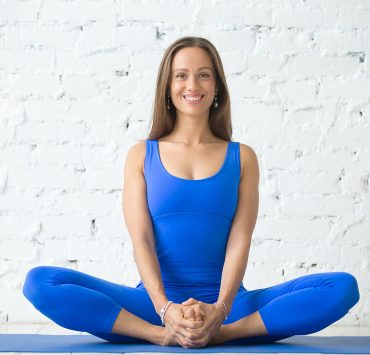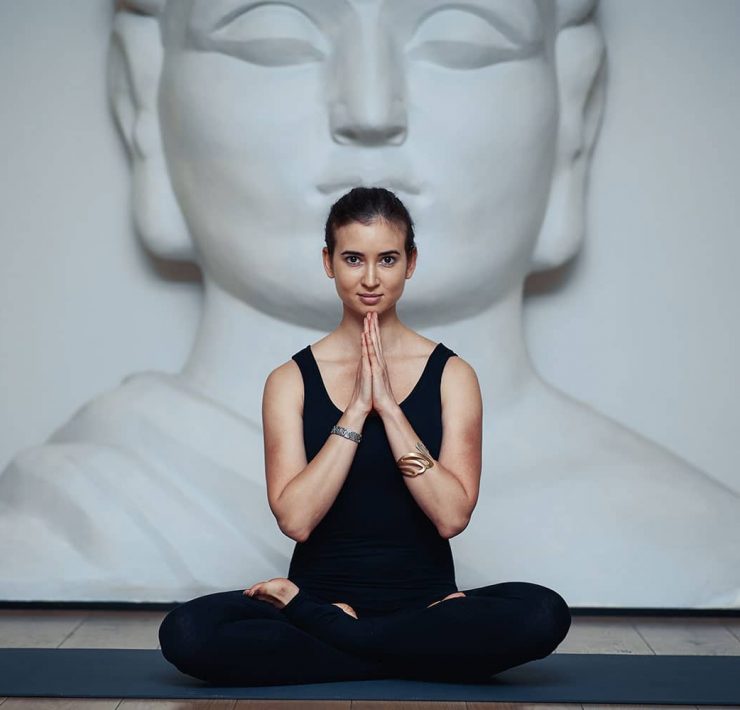
Yoga, meditation, and spirituality are at the top of the…
10 Tips for New Yoga Teachers
Keep a Notebook

During your yoga teacher training, you likely kept a journal to fill with notes from your classes. Just because you are no longer in a teacher training program doesn’t mean you should abandon the journaling habit. Keeping a notebook handy is great for writing down sequence ideas, inspiring quotes or passages you want to share with your students, ideas for themes for classes, or any inspiration you might encounter in the day.
As you start teaching, you may even want to get in the habit of writing down some notes after classes. Jot down the things that went well during class so that you can continue to grow those strengths and emulate them in the next class. Just as importantly, write down things that you can work on so that you can continue to strengthen your teaching and learn from your mistakes. Your class won’t always go exactly as you imagined it, so taking these notes will help you keep track of your progress and actively improve your techniques.
You’re Still a Student, Even As a Teacher

You may be a certified yoga teacher, but that doesn’t mean your learning process comes to a halt. As a yoga teacher, you should continue to learn new styles and concepts to develop and evolve both your personal practice and your teaching.
Look for workshops in your area to expand your knowledge on certain poses or styles of yoga. Take classes at different studios to get a sense of the variety of teaching styles, and challenge yourself to take classes based on techniques with which you are unfamiliar. Make a resource list of books and videos to watch on both the physical and spiritual practice of yoga, and see how you can incorporate new concepts into your classes. Listen to podcasts to get new perspectives on a variety of yoga topics. As you study, you may find a new style of yoga you like to teach, or may find new interesting ways to structure your classes.
There are a multitude of resources at your fingertips, so never let your learning process go stagnant. As you continue to learn and grow, you’ll become even more passionate about sharing your new knowledge with your students. Studying will help you develop and define your unique voice and style as a teacher, which leads to the next important piece of advice…
Find Your Specialty

200 hour yoga training programs are a great way for teachers to delve deeper into their yoga wisdom and get a solid foundation to base their classes on. However, every teacher has their own strengths, interests, perspectives, and unique knowledge that they can share with their students. Go beyond what you’ve learned in your training and figure out what styles of yoga interest you the most. Once you’ve explored and narrowed down certain paths of interests, continue your studies of those styles. As a teacher, you don’t want to simply rely on the teachings of a basic yoga training program. You want to find a specialty that you are excited to share with your students. That passion will not only drive you to be an even better teacher, but will resonate with your students as well.
Go Beyond the Poses and Alignment

Strong breath work, varied poses, and proper alignment are obviously essential parts of a successful yoga class. However, there is much more that a teacher can offer to their students beyond the physical asanas.
As you continue your studying, include a multi-faceted approach to your teaching. Find themes for classes that don’t just address the physical, but the mental and spiritual side of the practice as well. If you come across any quotes or passages that resonate with you, share them with your students at the beginning of class, and incorporate the concept throughout the practice. Share intentions that you’ve been including in your own practice so that students can incorporate it in theirs if they choose to do so. A yoga class can and should be much more than just a physical practice, so find ways of sharing deeper knowledge with your students that resonates with you.
Continue Your Practice at Home

As you start to teach more classes, you may find that your at-home practice falls by the wayside. However, becoming a teacher isn’t a free pass to abandon your own personal practice–in fact, practicing at home can improve your teaching.
Continuing your studies doesn’t only mean going to workshops, reading books, and taking new classes. It also means turning inward and cultivating new ideas from your own mind and body. The freedom to develop sequences in your own practice may open up new ideas that you weren’t aware of before. Equally as important, practicing at home can be much more accessible–it isn’t always feasible to be constantly dedicating time and money to workshops and books. An at home practice allows you to consistently use and develop your brain power without having to drain the bank, and also allows you to practice on your own time, even if you only have 15 minutes.
Use your practice to draw inspiration for sequences you teach your students, and further personalize your style. While the foundation that you learn in teacher training is great, build upon it with your own personal touches to make a teaching style that is truly your own.
Connect with Other Instructors of All Levels

While much of yoga focuses on looking inward, reaching out to your community is equally as important. Chances are you met many like-minded people in your yoga training program. Maintain these relationships, particularly those with peers who are on a similar path of becoming a teacher. This community of new instructors are in the same boat as you. You’ll be able to support each other when needed, as well as learn from each others’ successes and mishaps.
Just as importantly, connect with instructors who have more life experience as teachers. Every experienced yoga teacher has likely dealt with some of the same challenges that you are facing now, and may be able to offer some knowledgeable support and advice. You may even find a potential mentor in one of these instructors. If so, ask if you can sit in on some of their classes, or even see if they’d be willing to watch you teach a class and offer you notes.
New and experienced teachers alike can offer valuable insight and support. Use the community around you to your advantage so that you can continue to learn and develop your teaching.
Don’t Let Your Nerves Get the Best of You

Most new teachers deal with nerves during their first months of teaching, and they may manifest in a way that can be distracting to students. Fidgeting, pacing quickly, body posture that shows a lack of confidence, and a quivering voice can all weaken the experience of a class.
If your nerves affect your teaching, take steps to reduce them. It may be as simple as taking a few deep breaths or meditating to bring yourself to the present moment. Become aware of some of the cues that your body makes when you are nervous, and take a moment to focus and breathe if they come up during class. Even simply smiling during class can help your body release endorphins, which will help you relax.
If you have a bit more time to yourself before class starts, practice some calming yoga poses to help you collect your thoughts and shake off any nerves.
As you teach more classes, your confidence as a teacher will grow, and your nerves will start to diminish. However, as you’re still getting your feet wet as an instructor, find ways that will help you cope with your nerves so that you can be fully present while teaching.
Fully Prepare & Practice Sequences Aloud

Preparation is key as a yoga teacher, and new teachers especially shouldn’t rely heavily on improvising while teaching their classes.
Fully dedicate yourself to each new class by taking the time to make a teaching plan. Once you’ve laid out the sequences you are planning on teaching, put it on its feet and do the practice yourself. You may find that some things don’t work as well as you thought they would, so you can use this time to make the appropriate adjustments.
One of the most important parts of a class is timing–and it can also be one of the trickier parts to get right. After you’ve created your class, time yourself as you practice instructing it aloud. Speaking to an empty room may feel uncomfortable, but you’ll be able to more accurately time yourself so that you don’t go over, or end up ending the class too early. Speaking aloud will also help you get a handle on your text, so that you don’t find yourself stumbling on your words once you are actually teaching.
Lastly, veer on the side of having a shorter class, instead of trying to cram everything into your schedule. Rather than having to end the class abruptly before finishing, have a shorter class plan, with a few restorative poses to add-on to the end if you find yourself needing to fill more time. Even after timing yourself on your own, things may go a bit differently in class, so having those poses in your back pocket will help you adjust accordingly, while still having a well-rounded class.
Develop Your Career

Don’t forget that teaching yoga is a career path, and you need to treat it as such if you want to be successful. Even the strongest teachers can have difficulties securing a teaching job if they don’t know how to properly market them self.
Make steps to build a network in your yoga community. Take classes in studios you are interested in to get a feel of the culture. If you find some that would be a good fit for you, connect with the teachers and studio managers to discuss opportunities for teaching. Word of mouth is also incredibly important, so talk to your community of yoga teachers to see if anyone knows of openings and opportunities.
Social media has also become an important tool for yoga teachers to market themselves — 62% of teachers currently use a form of social media to promote their classes. While you don’t need to be a social media celebrity, creating business social media profiles will help you look more serious to potential employers. Once you’ve become more established, in can also help you connect with students by letting them know when and where you are teaching.
Lastly, don’t forget the old fashioned resume and cover letter. While the yoga teacher hiring process may seem more casual, having these documents can be extremely helpful for getting your foot through the door, especially if you are applying for positions online or walking into unfamiliar studios. It will help establish you as a serious candidate, and increase the likelihood of scoring an interview.
Don’t Lose Sight of Yoursel

As you are trying to establish yourself in your local community, it can be tricky to develop your own voice and find your true identity as a teacher. While it is great to draw inspiration from your training and other yoga teachers, don’t become a carbon copy. Be confident in what you can uniquely offer to students. Find ways to inject your personality and ideas into your teaching style, and you’ll start developing a voice that is truly your own. Authenticity is one of the best things you can bring into your classes, and your students will appreciate you for it.
Walking down the path of becoming an established yoga teacher is exciting, but it can include some obstacles along the way. By working through these obstacles, dedicating the time to developing yourself as a teacher beyond your yoga training, and finding your individual voice, you’ll find yourself on the path towards having a successful and fulfilling journey as a teacher.
What's Your Reaction?
Yoga, meditation, and spirituality are at the top of the list for writer and former nutritionist Amanda Carter. This devoted practitioner enjoys writing about health and wellness just as much as she enjoys living it.














